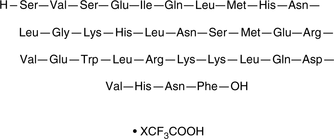Hormones(荷尔蒙)
The word Hormone comes means, "to spur on" which reflects how hormones acts as catalysts for other chemical changes at the cellular level necessary for growth, development, and energy.
Hormones are chemical messengers that carry and travel signals in the blood stream from 1 cell or glands to other tissues and organsto maintain chemical levels in the bloodstream that achieve homeostasis. All cellular organisms produce hormones.
Hormones also regulate the function of their target cells whicht express a receptor for the hormone. The action of hormones is determined by numerous factors such as its pattern of secretion and the response of the receiving tissue (signal transduction response).
Though few hormones circulate dissolved in the blood-stream, most are carried in the blood, bound to plasma proteins. For example, steroid hormones which are highly hydrophobic, are transported bound to plasma proteins.
An Example of antagonistic pairs of hormones is the Insulin, which causes the level of glucose to drop when it has risen and Glucagon causes blood sugar to rise when it has fallen.
There are two major classes of hormones 1. Proteins, Peptides, and modified amino acids 2. Steroids. In general, steroids are sex hormones related to sexual maturation and fertility. Steroids are made from cholesterol by placenta by our adrenal gland or gonads (testes or ovaries). Peptides regulate functions such as sleep and sugar concentration. They are made from long strings of amino acids, so sometimes they are referred to as "protein" hormones. Growth hormone, for example, helps us burn fat and build up muscles. Another peptide hormone, insulin, starts the process to convert sugar into cellular energy.
Hormones so perfectly and efficiently manage homeostasis due to negative feedback cycles. Our goal is to keep the concentration of a certain chemical, such as testosterone, at a constant level for a certain period of time, the way that a thermostat works. Using negative feedback, a change in conditions causes a response that returns the conditions to their original state. When a room's temperature drops, the thermostat responds by turning the heat on. The room returns to the ideal temperature, and the heater turns off, keeping the conditions relatively constant.
Endocrine hormone are secreted into the blood and carried by blood and tissue fluids to the cells they act upon, while exocrine hormones are secreted into a duct, and then into the bloodstream. Exocrine hormones are transferred from cell to cell by diffusion (paracrine signaling).
Hormones work slowly, over time, and affect many different processes in the body, such as Growth & development, Metabolism, Sexual function, Reproduction Mood,
Endocrine glands, etc… The major endocrine glands are the pituitary, pineal, thymus, thyroid, adrenal glands and pancreas. In addition, men produce hormones in their testes and women produce them in their ovaries.
Hormones have large effects and it takes picogram amounts to cause big changes in cells or even your whole body. That is why too much or too little of a certain hormone can cause harsh problems and complications. In Laboratory experiments, one can measure hormone levels in blood, urine or saliva.
The hormone levels circulating in the blood stream are controlled by a homeostatic mechanism, such as 1 hormone stimulates the production of a 2nd, the 2nd suppresses the production of the 1st .
For Instance, FSH stimulates the release of estrogens from the ovarian follicle but at high levels of estrogen itsuppresses the further production of FSH.
1 major class of hormones is the Proteins, Peptides and modified amino acids which are hydrophilic (and mostly large) hormone molecules that bind to receptors on the surface of "target" cells, cells are able to respond to the presence of the hormone. These receptors are transmembrane proteins. Binding of the hormone to its receptor initiates a sequence of intracellular signals that alters the behavior of the cell (opening or closing of the membrane channels) or stimulate (or repress) gene expression in the nucleus by turning on (or off) the promoters and enhancers of the genes.
A hormone binds to a site on the extracellular portion of the receptor which acts as transmembrane protein that pass through the plasma membrane x7, with theN-terminal exposed at the exterior of the cell and the C-terminal projecting into the cytoplasm.
Once the hormone binds to the receptor it activates a G protein associated with the cytoplasmic C-terminal which initiates production of a 2nd messenger such as cyclic AMP, (cAMP)which is produced by adenylyl cyclase from ATP, and inositol 1,4,5-trisphosphate (IP3)
The 2nd messenger initiates a series of intracellular events such as phosphorylation and activation of enzymes, release of Ca2+ into the cytosol from stores within the endoplasmic reticulum.
cAMP activates the transcription factor CREB (cAMP response element binding protein) which turns on gene transcription. The cell begins to produce the appropriate gene products in response to the hormonal signal it had received at its surface.
Steroid hormones are hydrophobic proteins/peptides and diffuse freely into cells. However, their "target" cells contain cytoplasmic and/or nuclear proteins that serve as receptors of the hormone. The hormone binds to the receptor and the complex binds to hormone response elements - stretches of DNA within the promoters of genes responsive to the hormone. The hormone/receptor complex acts as a transcription factor turning target genes "on" (or "off"). Hormones circulate freely in the bloodstream, waiting to be recognized by a target cell, their intended destination. The target cell has a receptor that can only be activated by a specific type of hormone. Once activated, the cell knows to start a certain function within its walls. Genes might get activated, or energy production resumed. As special categories, autocrine hormones act on the cells of the secreting gland, while paracrine hormones act on nearby, but unrelated, cells.
Hormone secretion is increased (or decreased) by the same substance whose level is decreased (or increased) by the hormone. The rising level of Ca2+ in the blood stream suppresses the production of PTH but a low level of Ca2+ stimulates it.
Products for Hormones
- Endothelin(3)
- Exendin(1)
- FSH(3)
- GHRP(7)
- GLP(4)
- Glucagon(4)
- HCG(2)
- Inhibin A(3)
- LHRH(3)
- Other Hormones(11)
- Peptide Hormones(114)
- Procalcitonin(7)
- PTH(9)
- Stanniocalcin(4)
- Thymosin(3)
- Thyrostimulin(2)
- TSH(2)
- Thyroid Hormones(2)
- Cat.No. 产品名称 Information
-
GC44566
Parathyroid Hormone (1-13) (trifluoroacetate salt)
PTH (1-13)
An N-terminal fragment of PTH
-
GC44567
Parathyroid Hormone (1-34) (human) (trifluoroacetate salt)
LY333334, PTH (1-34)
An N-terminal fragment of PTH
-
GC44598
Peptide YY (human) (trifluoroacetate salt)
Peptide Tyrosine Tyrosine
A peptide agonist for Y1, Y2, Y5, and Y6 receptors
-
GP21284
PMSG
孕马血清促性腺激素

-
GP21286
Pramlintide
普兰林肽是人类胰淀素的多肽类似物。

-
GC40138
Pro-Adrenomedullin (45-92) (human) (trifluoroacetate salt)
Mid-Regional proADM, Mid-Regional Pro-Adrenomedullin, MR-proADM, proADM(45-92)
A peptide derived from preproadrenomedullin
-
GC90290
Proadrenomedullin (45-92) (human) (trifluoroacetate salt)
Mid-Regional proADM, Mid-Regional Proadrenomedullin, MR-proADM, MR-proAM, proADM, proAM
一种来源于前肾上腺髓质素的肽。

-
GC44684
Proadrenomedullin (N-20) (bovine, porcine) (trifluoroacetate salt)
PAMP-20 (bovine, porcine), Proadrenomedullin N-Terminal 20 Peptide (bovine, porcine), ProAM-N20 (bovine, porcine)
A peptide fragment of preproadrenomedullin
-
GC40131
Proadrenomedullin (N-20) (rat) (trifluoroacetate salt)
ProAM-N20, PAMP-20, Proadrenomedullin N-Terminal 20 Peptide
A peptide fragment of preproadrenomedullin
-
GP21290
Procalcitonin Canine
Procalcitonin Canine Recombinant

-
GP21287
Procalcitonin Human
降钙素原人重组体

-
GP21288
Procalcitonin Human, His
Procalcitonin Human Recombinant, His Tag

-
GP21289
Procalcitonin Mouse
Procalcitonin Mouse Recombinant

-
GP21292
Procalcitonin Porcine
Procalcitonin Porcine Recombinant

-
GP21293
Procalcitonin Rat
Procalcitonin Rat Recombinant

-
GP21291
Procalcitonin Rhesus
Procalcitonin Rhesus Recombinant

-
GP21294
Proguanylin Human
Proguanylin Human Recombinant

-
GP21296
PTH (1-34) Human
甲状旁腺激素 (1-34) 人类

-
GP21297
PTH (1-84) Human
Parathyroid Hormone (1-84) Human Recombinant

-
GP21298
PTH (1-84) N15 Human
Parathyroid Hormone (1-84) N15 Labeled Human Recombinant

-
GP21301
PTH (7-34) Human
Parathyroid Hormone (7-34) Human Recombinant

-
GP21299
PTH (7-84) Human
Parathyroid Hormone (7-84) Human Recombinant

-
GP21300
PTH (7-84) N15 Human
Parathyroid Hormone (7-84) N15 Labeled Human Recombinant

-
GP21295
PTH Human
Parathyroid Hormone (1-34) Human Recombinant

-
GP21302
PTHrP Human
Parathyroid Hormone Related Protein Human Recombinant

-
GP21303
PTHrP N15 Human
Parathyroid Hormone Related Protein N15 Labeled Human Recombinant

-
GC92132
SAR441255 (sodium salt)
SAR441255 (sodium salt)是胰高血糖素样肽1受体GLP-1R、葡萄糖依赖性促胰岛素多肽受体GIPR和胰高血糖激素受体GCGR的肽三重激动剂。

-
GC49679
Sauvagine (trifluoroacetate salt)
A neuropeptide hormone

-
GC44881
Secretin (human) (trifluoroacetate salt)
A gastrointestinal hormone and neuropeptide

-
GC48327
Secretin (rat) (trifluoroacetate salt)
A neuropeptide hormone

-
GP21305
Secretin Human
分泌素 人类

-
GC92116
Semaglutide Main Chain (9-37)
Semaglutide Intermediate 29; Semapeptide
Semaglutide Main Chain (9-37)是合成semaglutide的肽起始原料。
-
GC49592
Sermorelin (acetate)
易吸潮
A growth hormone-releasing hormone analog
-
GP21306
Sincalide
Sincalide (Cholecystokinin octapeptide, CCK-8) 是一种快速作用的胆囊收缩素 (CCK) 氨基酸多肽激素类似物,可用于静脉输液后胆囊造影。

-
GC49123
Somatorelin (1-44) amide (human) (trifluoroacetate salt)
Growth Hormone-releasing Factor (1-44) amide, hpGRF-44, Human Pancreas GRF-44, Somatoliberin
A synthetic GHRH peptide
-
GC44914
Somatostatin-14 (acetate)
A cyclic peptide hormone

-
GC49483
Somatostatin-28 (1-14) (human, mouse, rat, porcine, bovine, ovine) (trifluoroacetate salt)
An N-terminal fragment of somatostatin-28

-
GC49574
Somatostatin-28 (human, mouse, rat, porcine, bovine, ovine) (trifluoroacetate salt)
A cyclic neuropeptide hormone

-
GP21307
SST
Somatostatin

-
GP21308
STC 1 Human
Stanniocalcin-1 Human Recombinant

-
GP21309
STC 2 Human
Stanniocalcin-2 Human Recombinant

-
GP21310
STC 2 Human, His
Stanniocalcin-2 Human Recombinant, His Tag

-
GP26112
STC1 Mouse
STC1 Mouse Recombinant is a single, glycosylated polypeptide chain containing 235 amino acids (19-247a

-
GC92118
Taspoglutide (acetate)
[Aib8,35]hGLP-1(7-36)NH2; BIM-51077C
Taspoglutide (acetate)是胰高血糖素样肽1受体的激动剂(GLP-1R;人受体Ki=1.1nM)。
-
GC92097
TCMCB07 (trifluoroacetate salt)
Ac-Nle-Asp-Pro-D-2Nal-Arg-Trp-Lys-D-Val-D-Pro-NH2; Mifomelatide
TCMCB07 (trifluoroacetate salt)是黑色素皮质素受体1 (MC1R)、MC3R、MC4R和MC5R的肽拮抗剂(ic50对人类受体分别为19.5、0.59、13.58和8.07 nM)。
-
GP21313
Thymosin beta 4
Thymosin β4

-
GP21312
Thymosin α1
胸腺素 a1 乙酸盐

-
GP21314
Thymosin β4
Thymosin-b4 Human Recombinant

-
GC48358
Thymulin (acetate hydrate)
Thymic Factor
A peptide hormone
-
GP21315
TP 5
Thymopentin





